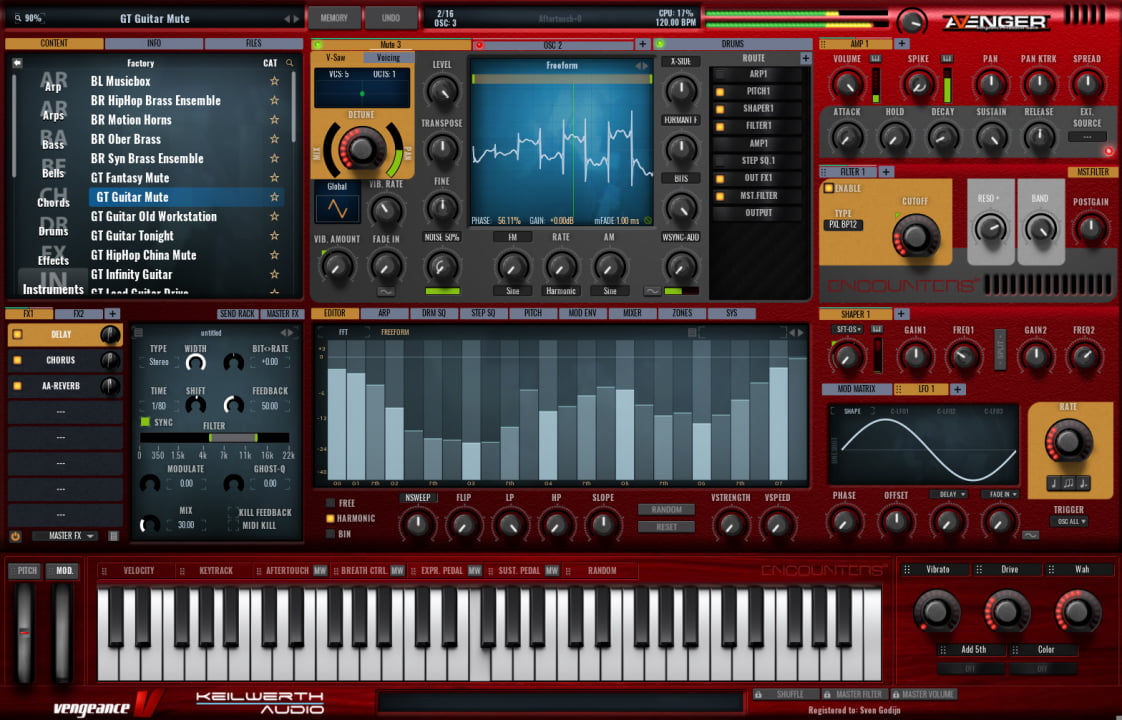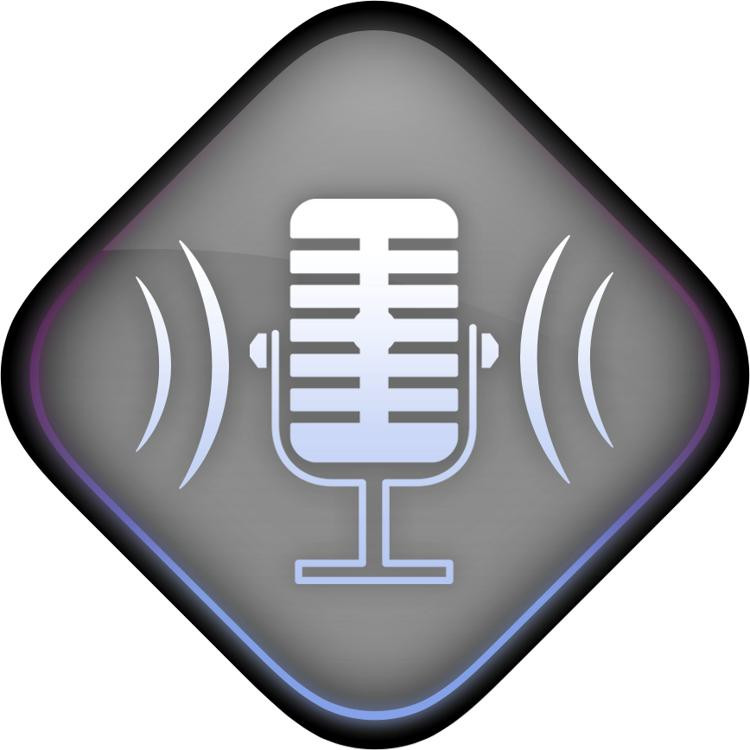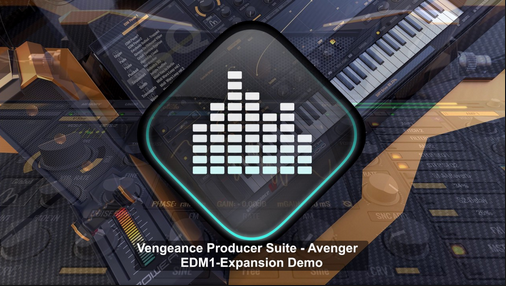
With so many of each module type possibly visible at once, this is extremely helpful. The flow of each oscillator is represented throughout the interface by colour-coded bars at the top of each module - green for Osc 1, pink for Osc 2, etc. Setting up the signal flow like this feels quite unusual, but it means each oscillator (or a group of them) can effectively serve as a self-contained 'synth within a synth'. Other than that, the path is fixed - you can't place the Pitch Envelope after the effects, say.Įach module can be bypassed, though, or removed entirely (ie, returned to the module selection menu at the top of the panel). You can insert Gain blocks wherever you like in the signal path for volume adjustment, the Shaper (a superb waveshaping distortion module) is freely positionable, and multiple filter blocks in a Route can be arranged in any order.

Avenger vst review mod#
The LFOs feature 17 preset waveshapes and three user-drawn ones the Mod Envelopes can be synced to cycle over up to 160 bars and include a Loop+Release mode, in which the signal loops to Release marker while the note is held, then jumps to the Release point, continuing until released and the breakpoint Pitch Envelopes are polyphonic, to give just a few highlights.

The modulators themselves are all well up to scratch. Assignments are grouped by mod source in the Matrix and collapsible to reduce clutter, so you can switch any source out to change all of its assignments at once. Up to 256 modulation assignments are made by dragging sources onto targets or selecting both in the Mod Matrix, while amounts are set by dragging the tiny triangles that appear next to modulated parameters or the sliders in the Mod Matrix. Needless to say, the list of targets is even more extensive, covering - we think - every parameter of the instrument, from the oscillators and filters to the arpeggiators and effects. The numbers are mindboggling: eight Pitch Envelopes, eight multi-breakpoint Mod Envelopes, eight Step Sequencers, four Amp Envelopes, four Filter Envelopes, four LFOs, three Macro knobs, an array of 'Maths' functions, all the standard MIDI messages and several CCs, and the oscillator Wavetable Envelopes and Vibrato LFOs. When it comes to modulation, Avenger is possibly the most well-equipped synth we've ever met. Thus, one oscillator could supply a bassline, while the next two blast out a lead, the next three a pad and so on, each 'instrument' triggered by its own arpeggiator, processed through its own effects, and modulated by its own step sequencer, envelopes and LFOs - and all at the press of a single note on your keyboard! Indeed, with that in mind, the oscillators can even be renamed. The Oscillator Route panel sets the course of the currently selected oscillator's output signal, passing it through your choice of the potentially many active filters, amps, pitch envelopes, arpeggiators, trancegates, effects racks, etc all the way to final output block. One oscillator could supply a bassline, while the next two blast out a lead, the next three a pad. Rather than simply merging the oscillators into a composite tone in the mixer, as other synths do, Avenger treats each one as a wholly discrete sound source, to be triggered and mixed with others in the traditional way if desired, or sent off down its own path as the basis of a self-contained and separately sequenced 'instrument'. It's just a shame each channel can only load samples, not synth oscillators - although we're told this is planned for an update. Each drum also has its own Route panel, for routing through the Shaper, Step Sequencer, Effects and Master Filter sections, but not the 'insert' Filter or Amp.Īvenger's Drum module is great fun and a worthy inclusion. Additionally, the triggering can be offset in either direction, for effortless 'smearing' of claps and snares - a welcome feature that's all too rare in drum machines. Adjustable parameters include Volume, Pitch, Pan and Spike, the last for boosting transients (and also included in Avenger's main Amp module).

Velocity can also be edited by dragging the stalks under each note, and rolls of up to eight hits can be specified for individual notes.Ĭlicking a waveform reveals that sample and its editing controls in the main Editor. Click notes in with the pencil tool, select them with the marquee tool and adjust the Velocity, Pan, Pitch and Gate time of the selected notes using the so-named knobs.

The Drum Sequencer is simple but effective. The kit can be played by the Drum Sequencer when a MIDI note is received, or unhooked from the Sequencer for triggering via a keyboard or pads.
Avenger vst review full#
The preset drum library contains over 160 full kits, each with an accompanying sequence, although kits and patterns are mix-and-matchable, too, and you can drag your own samples in.


 0 kommentar(er)
0 kommentar(er)
